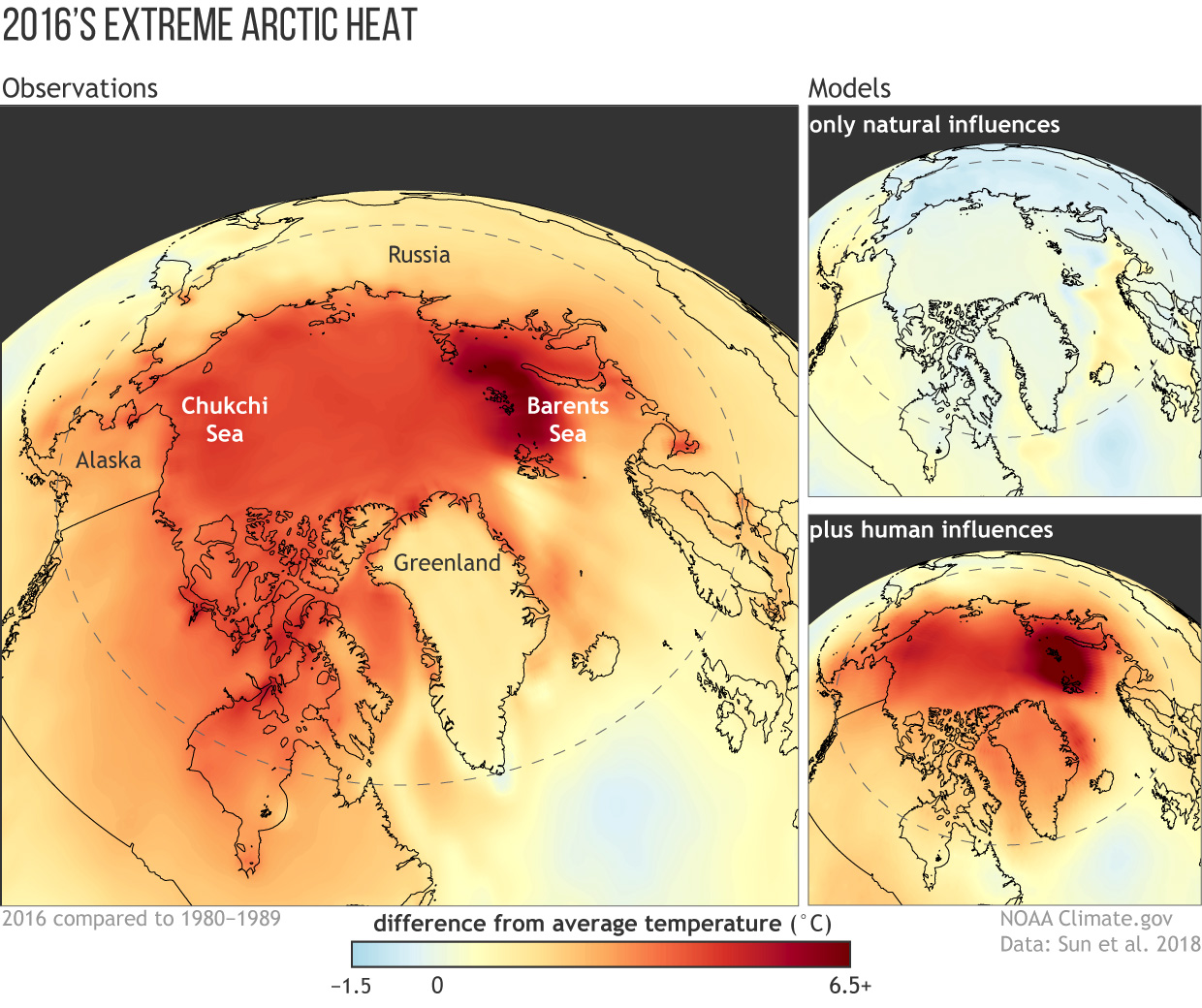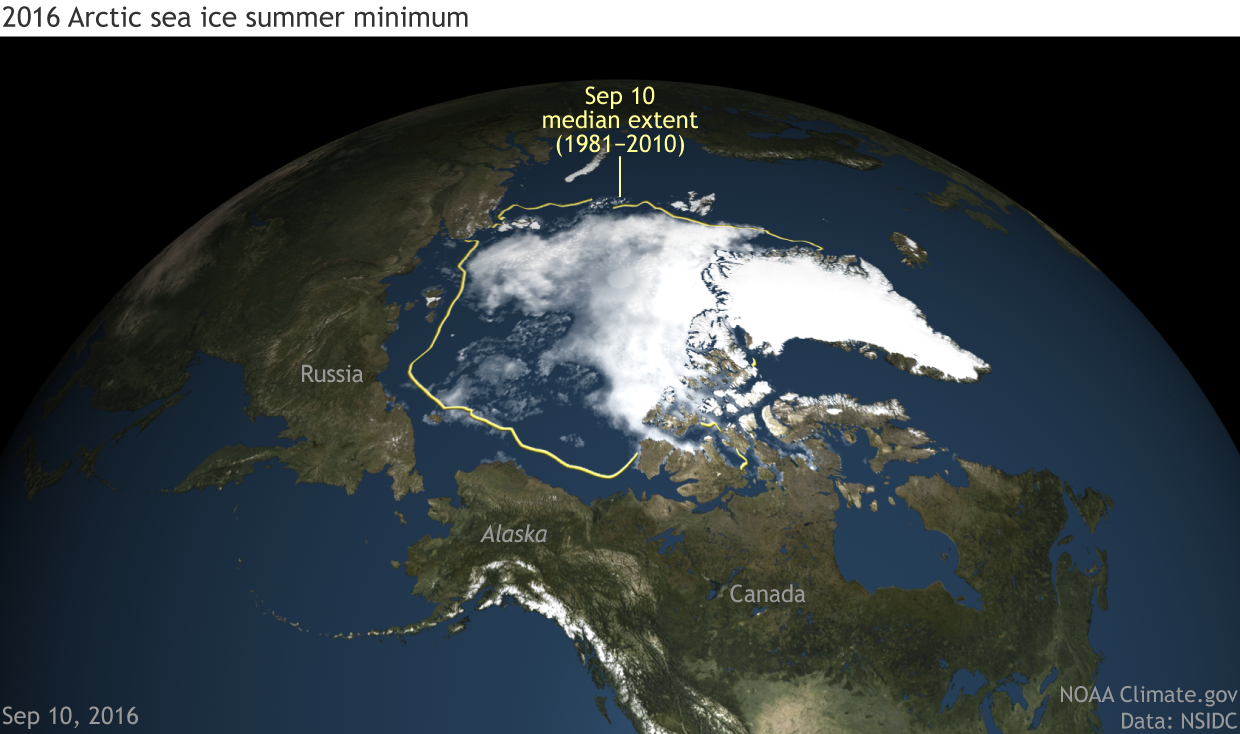Researchers link 2016’s Arctic extremes to human-caused climate change
The scientists concluded that there was a “virtually zero chance” that 2016 conditions could have occurred without human contributions.

Warm temperatures in the Arctic have attracted headlines this year, but it was deja vu for some scientists who witnessed the same weather and associated sea ice loss in the fall and winter of 2016. In what was dubbed a “black swan event,” the Arctic set a new annual temperature record with temperatures that were 50 degrees above normal.
Now, researchers from NOAA and the Cooperative Institute for Research in Environmental Sciences have confirmed the suspicion that the 2016 warming event was a result of human-caused global warming and subsequent sea ice loss.
Published in the journal Weather and Climate Extremes, the study used a widely-used computer model to compare two types of scenarios: in one, they plugged in 2016 measurements for greenhouse gas emissions, sea-surface temperatures and the level of sea ice, and in the other they plugged in late-1800s levels for greenhouse gas emissions and temperatures.
After running the experiment multiple times, they found that the model with 2016 measurements accurately reproduced the 2016 Arctic warming event. In the 1800s model, that kind of warming event was impossible; there was a “virtually zero chance” that would have occurred without human influence, read a press release from NOAA.
“It’s been said the Arctic is the canary in the coal mine,” study co-author Martin Hoerling, a NOAA meteorologist, said in a statement. “The canary in the coal mine really chirped loudly in 2016. This is where the signal is clearly emerging beyond the noise, and it affirms predictions of how climate change will unfold on Earth.”

The study highlighted the role that sea ice played in the warming event, including the loss of sea ice cover and the fact that much of the Arctic sea ice is thin. Both scenarios allow for heat in the water to transfer into the atmosphere.
And while scientists say the severity of the 2016 extreme temperatures in the Arctic were partially influenced by the strong 2015-2016 El Nino event in lower latitudes, the region has continued to see high temperatures and a resulting loss of sea ice. This winter and spring, some parts of the Arctic experienced above-freezing temperatures, and ice extent in the Arctic was lingering close record lows in April.
“The sea ice has taken a huge nosedive in the last couple days,” Julienne Stroeve, a senior sea ice scientist with the National Snow and Ice Data Center, told InsideClimate News.
The study’s authors project that these types of heat waves will continue to occur in the Arctic, with the high temperatures of 2016 becoming the typical annual surface temperatures within ten years.